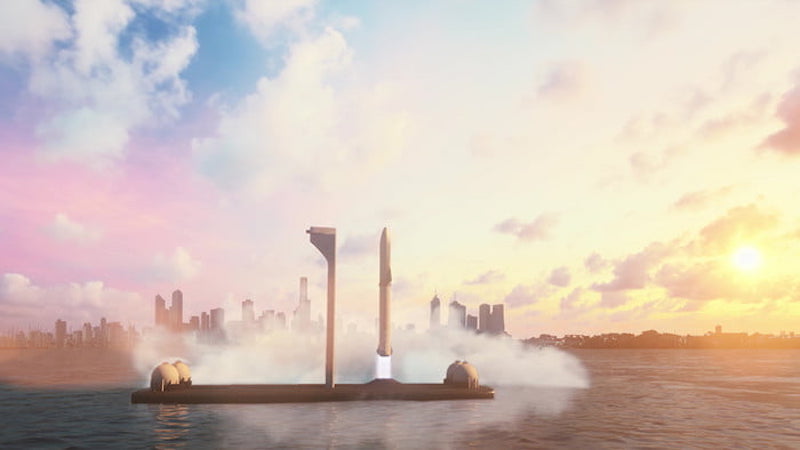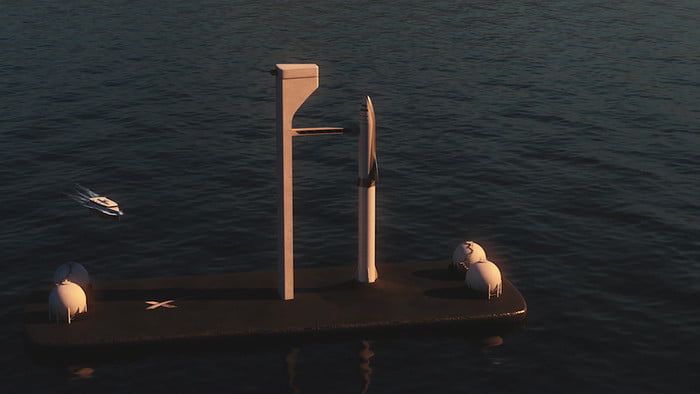SpaceX is planning to build “floating, superheavy-class spaceports” for Mars and moon missions, as well as for “hypersonic travel around Earth,” Elon Musk, the company’s CEO, confirmed in a tweet on Tuesday, June 16.
Musk’s revelation came shortly after a SpaceX enthusiast highlighted a recent job posting from the private space company for “engineers and technicians to design and build an operational offshore rocket launch facility.”
SpaceX is building floating, superheavy-class spaceports for Mars, moon & hypersonic travel around Earth https://t.co/zLJjz43hKw
— Elon Musk (@elonmusk) June 16, 2020
Responding to a tweet asking if the facility would be close enough to the shore so that people could enjoy the spectacle of a launch over the water, Musk said that it would have to be “far enough away so as not to bother heavily populated areas,” but added that anyone in a boat would be allowed to get within a few miles of the spaceport to see the lift-off at close distance.
Please tell me we can still get close enough to see them launch. It’ll be such a shame if there can’t be a giant crowd gathered to witness history pic.twitter.com/0io1cC4yk2
— Everyday Astronaut (@Erdayastronaut) June 16, 2020
Another of his 36 million Twitter followers asked if the idea would involve refurbishing oil platforms and connecting them to land using Musk’s under-development Hyperloop transportation system. “Pretty much,” the billionaire entrepreneur responded.
SpaceX has been successfully landing its Falcon 9 rocket on a barge in the ocean since 2016, but using a floating spaceport to launch an even bigger rocket — most likely its Super Heavy booster and Starship spacecraft — is a tantalizing prospect and would be a first for the company as it continues to develop its reusable rocket system.
Musk’s mention of rocket-powered Earth-based flights is also an exciting one, resurfacing an idea that the CEO first talked about 2017 as a way to move people and cargo between cities at hypersonic speeds. In fact, when he discussed the plan three years ago, the company showed off images of how it might look, including renders (below) of a sea-based launch station. Musk said he envisions tests for such a service beginning in two or three years.
Floating spaceports would give SpaceX more control over its launch schedule, important if it is intent on building a point-to-point transportation system requiring regular rocket rides, while space tourism trips are also on the cards
But launching rockets from floating stations isn’t actually new. Sea Launch, for example, achieved the feat from a platform in the Atlantic Ocean in March 1999, before going on to successfully launch 31 more rockets until its last mission in 2014. When this was pointed out to Musk on Tuesday, the CEO tweeted that Sea Launch’s rocket was “an order of magnitude smaller” than Starship, and didn’t land back on a platform.




